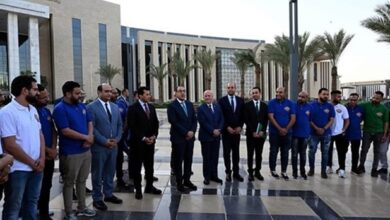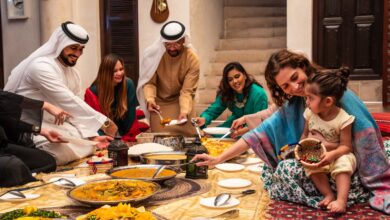This year, bring some color into your home for Ramadan. The holy month is right around the corner, or rather, it’s knocking on our doors, and that means that many relatives and friends will be knocking on your doors too. Start quenching your boredom by choosing from this menu of easy and crafty tips on how to bring festivity into your home.
Muslims spend the thirty days of Ramadan fasting from dawn till dusk. And, coinciding with summer this year, getting through the holy month will certainly be challenging. But there are plenty of ways to make the hours pass, such as decorating your house for the occasion.
Preparing for iftar and sohour gatherings should not be limited to standing in a steamy kitchen. Instead (or rather, alongside, for food is simply indispensable this month) you can treat your guests to a visual display of Ramadan spirit. This can be achieved by investing in a few simple materials that can transform your house into a festive home, budding with the adored Ramadan character.
At the dinner table, where most of the action takes place (serving food and second helpings for your guests will certainly seem grueling and never-ending), there are many things you can do to induce a celebratory spirit.
Small lanterns can be placed around the table during iftar, and china is bound to have manufactured small fawanees as well as large ones. If you are inviting guests for sohour, you could place candles around the table and keep the lighting around the house soft for a feeling of spirituality and serenity.
Also, you want to expand your dinner table to accommodate all the guests. You could place the food on a separate table, introducing a more ‘open-buffet’ feeling. Alternatively, you could seat teenagers and kids at a separate table, ensuring minimum noise and maximum enjoyment for the grown-ups.
Other more outlandish ideas include buying the traditional kheima , or tent, patterned fabric which is very commonly associated with Ramadan events, and cutting it up to make an unorthodox, Ramadan-flavored table-cloth. You could also buy an extra meter of the fabric and create little handkerchiefs for a complete set.
You could also draw patterns onto your place-mats yourself. No, do not ruin those you already have. Buy some good quality paper, and get your paints and crayons ready. If you happen to have an Islamic art or calligraphy book at home (which is somewhat unlikely), or if you have access to the Internet (much more likely) search for your favorite piece of Arabic calligraphy, trace it, and reproduce it on your very own place mats. Your children can help with that, as they would happily color inside and outside the lines, making them much more colorful.
Your children can be very helpful for this quest for a more festive Ramadan. For a dual conquest, you can entertain your kids by giving them something to do during the long, long daytime, while ending up with a collection of colorful decorations.
Along with fanoos Ramadan, the stars and crescent are all popular symbols of the Islamic holy month. You will need colored construction paper, scissors, tape, a stapler, a ruler, a pencil, glue, glitter, some paint, and gold and silver paper. And let the games begin. Your kids can cut out lanterns, stars and moons of varied shapes and sizes, and those can be hung all around the house.
You can even resort to balloons and streamers, but you'll want to try to Ramadan-ize them in some way, by, for example, writing “Ramadan Kareem” in markers across the balloons.
Another task for your children to do is design their very own prayer rugs for the rest of the family as well as your guests. Old, white pillow-cases can be used as a canvas where fabric paints can render images of mosques, lanterns and other Islamic symbols.
Gatherings for Ramadan are different from other year-round functions in many ways. First of all, there is the emphasis on food and beverages. Make sure to have plates of traditional dried fruits and nuts scattered around virtually every table in the room.
If you can afford it, invest in the large traditional tamr hindy and amar el-din glass containers with the brass taps. These will allow people to get up for re-fills without having to enter your inevitably messy kitchen, and will provide you with the oriental look you are going for.
Aside from food, Egyptian Ramadan often revolves around television. With hundreds of programs emanating from this apparently talent-infused country, we are exposed to an endless stream of series, commercials, talk-shows and comedy programs–not all of which live up to their genre. And apparently, we do not have the courage to switch off the TV. So, take extra care in arranging your post iftar seating to maximize TV visibility.
An oversized fanoos at your door is always a good way to welcome or wave-off your starving or over-stuffed guests. But how about something more inventive? All you need is a power cord with colored pea lights and the minimal skills required to shape it into a star, moon or lantern.
You cannot forget what is truly important to Muslims in Ramadan though. Fasting, performing prayers, and being as charitable as possible are meant to take precedence over colorful celebrations. Yet, combining them can bring festivity into this holy month, in which Muslims celebrate the arrival of the first verse of the holy Quran.




